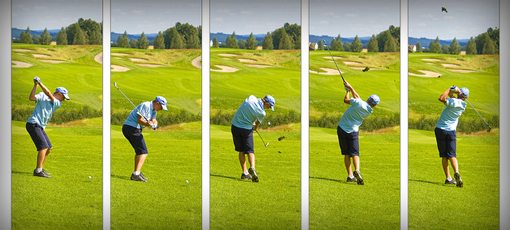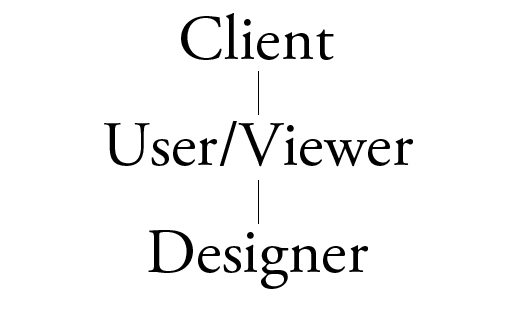Establishing a Hierarchy of Goals for Everything You Design
What one thing above all else makes for a great design? Where should your focus lie? More importantly, is it possible or even desirable to focus on a single goal at the expense of others?
Today we’ll take a look at why goal-oriented design is good design and discuss how being a designer means weighing several competing factors. We’ll also discuss how to decide which goals are the most important and how establishing a hierarchy for each project will make for a better experience for the client, the user and the designer.
The Magic Formula

There’s constant debate in the design community over what the primary idea, principle or tactic is for creating “great” designs. What sets the work of real design rockstars apart from the rest of us? We tend to want some magic formula that says, “Follow these steps and you’ll have success every time.”
I don’t possess such a formula, nor do I believe one even exists. However, I am a major proponent of “goal-oriented” design and speak about this quite often. I think the difference between a good design and a bad design is that a good one meets its goals and a bad one does not. Often a “bad” design is even the result of having followed no clear goals in the first place.
Accepting this premise still doesn’t get us very far. Our conversation has merely shifted from what makes a great design to what makes a great goal. Too often I see this discussion forcefully whittled down to a single principle. What should a designer focus on? Aesthetics or Usability? The client or the user? As if being a designer merely involves picking one major goal and sticking to it.
Design is Like Golf

This problem is a lot like that of hitting a golf ball and having it land anywhere near where you want it to (which I’m incapable of doing). If you’ve never played golf or even been to a driving range, then you’re quite sure there’s just one primary task: hit the ball. You’re likely to think that your primary goal is centered on one thing: strength. Hit the ball as hard as you can so it will go as far as possible.
However, when you actually play golf with an instructor telling you how to master a swing, you see that it’s much more complicated that that! You have to stand the right way, hold your arms just so as you bring the club back, avoid twisting your body as you bring the club down, transition seamlessly through various parts of the swing, have just the right amount of follow through, it goes on and on. What seems like it should be a fairly simple task turns into a vastly complicated series of instructions and goals that you might get right only one out of a hundred times.
Design is the same way. Trying to find that one magic thing that will make it all work is as silly as thinking that simply swinging your hardest will result in a beautiful straight shot up the fairway. Instead, you need to focus on a myriad of goals, assigning various degrees of priority to each with the ultimate end being that perfect swing.
Not All Goals Are Created Equal

It would be easy to just say that you need to consider all goals equally for a well rounded design, but let’s face it, real world projects afford you no such luxury.
The age old designer aphorism often holds a lot of truth: “Good, fast or cheap; pick two.” These goals are a bit oversimplified, but this immediately communicates that there is indeed a limit to the goals that we can achieve in a given effort.
So given a finite amount of time and resources, how should we establish our goals and which are the most important? The problem seems to lend itself to a hierarchical structure. When you have multiple goals competing for your attention, the simple solution is to list them out in order of importance. Before discussing which goals belong at the top of the hierarchy, let’s discuss what type of goals you should be establishing for a design.
Stakeholders Lead to Goals
The first thing I like to do to establish some base level goals is to think of the involved parties and their interests. For instance, a given project is often associated with a client who of course already has a group of goals in mind.
Client Goals
That client has various needs and wants to keep in mind. The design often needs to accurately represent the company or brand, encourage users to take action, meet important deadlines and stay within the established budget.
User Goals
The ultimate user (interactive design) or viewer (static deign) carries another very important set of goals. This is where usability and UX come into play. The user wants everything to work fluidly, the communication line to be clear, and for effort to be minimized.
Designer Goals
Yes, we designers typically have goals in mind as well. You can deny it, but you’re probably lying. Better to be honest and get your own goals out in the open so you can decide whether or not they are worth pursuing. This can be anything from trying a new design style that you’ve been itching to pull out or earning some recognition for working with a major client. Your own goals really need to be evaluated in light of the previous two vested parties as they can often conflict.

Conflict Defines Hierarchy
As indicated in the previous statement, the key to establishing your hierarchy is to consider who wins in an argument. If a conflict arises, which goal will ultimately be pursued? Odds are, whether you like it or not, the client goals sit on the top of this hierarchy. I personally love to hold the user up as the person to ascribe to please, but ultimately, I’ve been hired by someone to do what they ask so my main concern is respecting that agreement.
Rogue designers that hold what they imagine to be the user’s needs above those of the people who write the checks often translates to designers who rip off their clients and earn a bad reputation.
Imagine you pulled up to a fast food drive through and ordered your son a cheeseburger Happy Meal. Then you get to the window and the guy behind the counter has decided that kids like chicken nuggets better. Armed with his superior knowledge, he gives you nuggets instead in the name of having your child’s interests at heart. You’d probably be irate right? It’s your money, your kid; if you pay for a cheeseburger, you had better get one!
Of course, ideal clients make user goals high on their own list of goals, which makes things considerably easier. However, when there is a conflict, remember the hierarchy.
Each Project Requires a Unique Hierarchy
Remember that the client, user and designer hierarchy above just defines general categories of goals, not the goals themselves. This is simply a device to help you think of goals for the design and provide insight for how to order them in light of other goals.
The reality is that each and every project requires a custom and unique hierarchy to be established. For instance, one popular goal for web designers right now is “Responsive Design.” Many love this method so much that they would suggest that it take a permanent position at the top of your goal hierarchy.
However, a given client may have zero interest in pursuing mobile users at this juncture. Or perhaps they already have a custom mobile app and don’t want to pay you to cater to their mobile users. This is a case where your concern for the user might lose to a client’s iron will.
Conversely, maybe your client is completely sold on Responsive Design and actually wants it to be a top priority. This sets up a different goal structure than the last project.
Conclusion:
Start Every Design with a Rough Goal Hierarchy
The point of all this is to illustrate that one size doesn’t fit all in the case of goal-oriented design. I can’t give you a clearly delineated list of goals that you can then apply to every project.
If you want to be a “great” designer, then start each project not in Photoshop but with a plain old pen and piece of paper. List out some goals for the design then attempt to order them while considering the client, user, designer relationship. Once you’re finished, go over this conceptual approach with your clients. They’ll likely be amazed that you’re being so thorough and will be eager to help you tweak that hierarchy to something they can get on board with.
After this is finished, you’ll be infinitely more prepared to create something that is as effective as possible. Further, having a list of agreed upon goals in place will help you defend your position on a given conflict. If a client gives you random direction that strays from the path, you can pull out the goal hierarchy that was already agreed upon and show how you’re attempting to make sure the end result follows this plan.
Image Credits: Dan Zen, Harald MM and Horia Varlan.